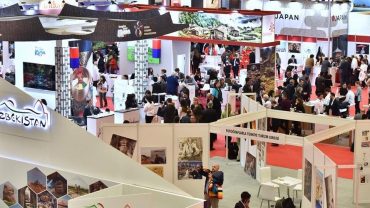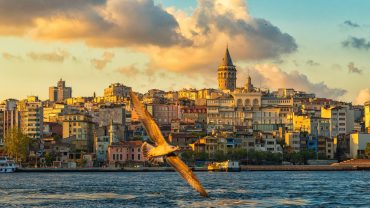Güngören is a small industrial and working class residential district of Istanbul, Turkey. It is located near the district of Bakırköy.
Güngören is hard to distinguish from its neighbouring districts in the industrial area north of the E5 highway, districts such as Merter or the poorer parts of Bahçelievler. Like them it has seen a rapid and uncontrolled influx of migrants from Anatolia since the 1950s. In 1955 this was an open space with a small village named Vidos on it. Then a main road out of the city to the west was put through here and people began to build houses near the road. Most were built illegally. Today there are 237,000 crammed into a tight mass of cheap apartment blocks. The district was the site of the 2008 Istanbul bombings.
The housing districts of Güngören are slightly older and better established than other districts of 1980s migrants to the city, such as Esenler or Bağcılar, but still consist of narrow streets lined with six or seven-storey apartment buildings with no space between them. The difference is that the buildings are slightly better-maintained and there are more shops in the streets. But still standards of living are low.
Other parts of Güngören are faceless, nameless poorly lit muddy roads lined with factories. Crime is a problem. Certainly the industrial estates are not welcoming after dark.
Lately, the municipality has started to improve the infrastructure, and has extended the tram from Zeytinburnu to improve the transportation in and out of the district.
Güngören, being one of the smallest districts, is located on the European side of Istanbul, consists 11 neighbourhoods. Population density is very high in the district due to rapid increase after 1950s. Although population was not more than 300 in 1950s, it is more than 300,000 right now. Mostly preferred by families, majority of residents here are highly conservative. Güngören has nothing special except a few shopping malls and neighbourhood of called Merter which is the hub for trade.
Merter is most famous neighbourhood of Güngören. Merter was a small village which had nothing more than vineyards and fields in 1950s. First, Merter was established for woodsman. Idea was to create huge economical area for woodsman and make them gather in Merter area. But, woodsman disesteem Merter and refused to gather. Then, it became an area for textile factories.
Now, Merter is textile centre of the city and its well-known area in the world. Its contribution to the economy is very important. Merter provides 40% of textile exportation of Turkey with its numerous small and big workshops. In the evening, population is around 80,000 and during daytime it increases up to 300,000. Recently, Merter is changing. In addition to be the textile centre it is becoming an open-air shopping centre, too. Numerous visitors visit Merter and spend their all day shopping around. The reason why Merter attracts so many visitors is the area offers too many options with reasonable prices.
If you want to have a look at Merter, access is very simple. Easiest way to go there by metrobus and metro. There are also lines of buses and dolmush (dolmuş) buses passing from the district.





Comment (0)